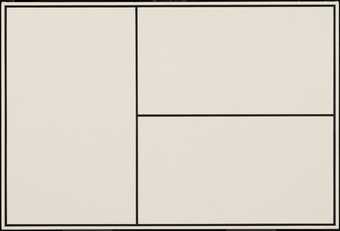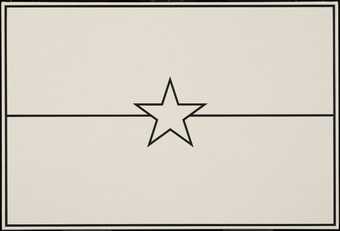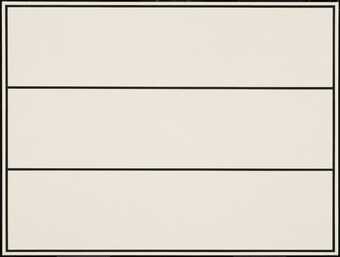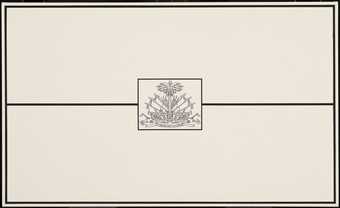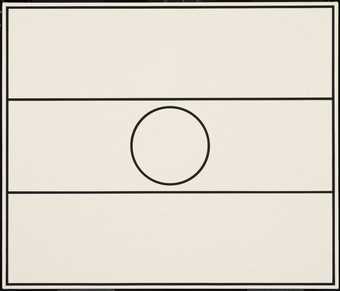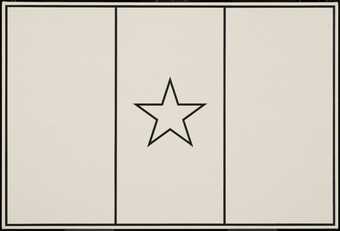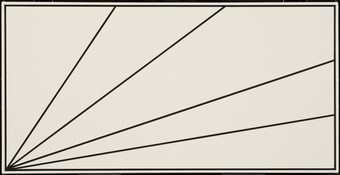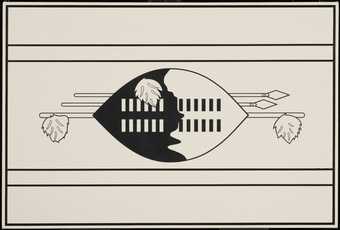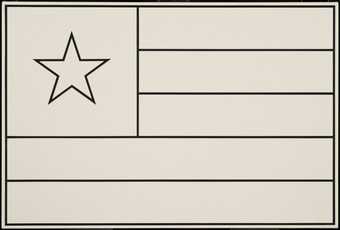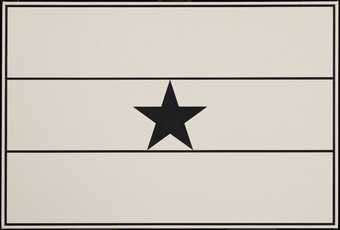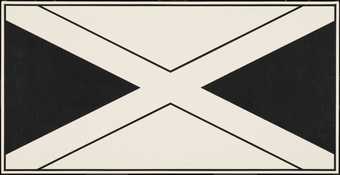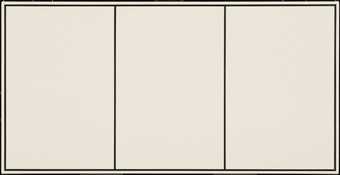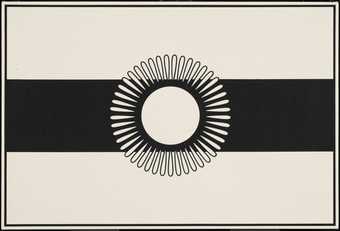
In Tate Liverpool
- Artist
- Glenn Ligon born 1960
- Medium
- Iris print, screenprint
- Dimensions
- In two parts, each: 811 × 576 mm
- Collection
- Lent by the American Fund for the Tate Gallery 2007
On long term loan - Reference
- L02822
Summary
This diptych print produced by Glenn Ligon is based on the artist’s first exclusively-text painting from 1988, Untitled (I Am A Man) (Private collection). The left panel is a straightforward print of the 1988 painting while the right panel is a print that includes the overlay annotations of painting conservator Michael Duffy.
Ligon’s original 1988 painting is a reproduction of the protest placards carried by sanitation workers in Memphis, Tennessee in the spring of 1968. His canvas shares the verticality and dimensions of the striker’s placard, with a background painted in white oil paint on top of which the phrase ‘I AM A MAN’ is executed in black enamel block letters. Displaying these very few words en masse, the men vividly drew attention to the city’s long-term abuse and neglect of black employees following the deaths of two colleagues in the strike that preceded the assassination of the civil rights leader Martin Luther King Jr (1929–1968). The strong, plain language and the strikers’ insistence on visibility were emblematic of the non-violent resistance engaged throughout the Civil Rights Movement. Ligon recalled seeing Ernest C. Withers’s iconic photograph of the Memphis sanitation workers in congressman Charles Rangel’s office while working as an intern at the Studio Museum in Harlem, New York in the early 1980s.
What was two decades earlier a rallying cry for civil protest became a breakthrough statement for Ligon, who at that time had begun to experiment with writing over the top of his abstract-expressionist canvases. The directness and terseness of the painting’s language and its use of the pronoun ‘I’ in particular proved significant in the conception, choice of content and execution of Ligon’s later text-based paintings, which often confuse quotation and invention. Untitled (I Am A Man) was ‘manifestly the first work in which Ligon’s desire to fuse ostensibly irreconcilable representational modes – the formalist painting, the political statement and the private question – resulted in something fraught but whole’. (Darby English, ‘Glenn Ligon: Committed to Difficulty’, in The Power Plant 2005, p.44.)
Thus when Ligon revisited this canvas ten years later, he approached it as a complete, coherent image rather than as a text to be re-quoted or rehabilitated. The left panel of Condition Report reproduces the scaled-down painting as an object. On the surface of the right panel, and equally distributed around its margins, Duffy’s annotations point to a history of smudges, hairline cracks, fingerprints, threads of canvas and stray paintbrush hairs. Squiggles, hashes, dots and other neat symbols indicate the grain or pattern of various imperfections in the painting due to age and wear. By submitting his work to this procedural analysis, Ligon emphasises the degradation not only of the material components, but also the subject matter, through reproduction and prolonged exposure. He has described how the process of making Condition Report served as a temperature gauge for the cultural moment, in relation to his ongoing concerns as an artist:
it’s a return to my own production, but in the case of those prints that came out of the condition report, it was about detailing not only the physical aging of the painting over time – all the cracks and paint loss and all of that – but also changing ideas about masculinity, changing ideas about the relationship we have to the Civil Rights Movement.
(Ligon, interviewed by David Drogen, Museo Magazine, 2010, http://www.museomagazine.com/802505/GLENN-LIGON, accessed 24 January 2012.)
Exhibited together, the paired panels of Condition Report reveal the passage of time with regard to political history as well as the changing status of the art object.
Further reading
Glenn Ligon: Some Changes, exhibition catalogue, The Power Plant, Toronto 2005, reproduced pp.117, 133.
Scott Rothkopf (ed.), Glenn Ligon: AMERICA, exhibition catalogue, Whitney Museum of American Art, New York 2011.
Kari Rittenbach
January 2012
Does this text contain inaccurate information or language that you feel we should improve or change? We would like to hear from you.
Display caption
Untitled (I Am a Man), a 1988 painting by Ligon, takes its text from signs carried by striking black sanitation workers in Memphis in 1968. The slogan ‘I Am a Man’ was a way of protesting that they were equal to their white counterparts, who were paid more for doing the same job. Here Ligon juxtaposes a reproduction of the 1988 painting with another that has been annotated by a conservator making a condition report on the work. The imperfections noted might simultaneously be read as a questioning of the self as well as recording the frailties of the object.
Gallery label, June 2010
Does this text contain inaccurate information or language that you feel we should improve or change? We would like to hear from you.
Explore
- abstraction(8,615)
-
- non-representational(6,161)
-
- text(1,043)
- politics and society(2,337)
- reading, writing, printed matter(5,159)
-
- placard(127)
- social comment(6,584)
-
- civil rights(183)
- race(381)
You might like
-
Fred Wilson Antigua-Barbuda
2009 -
Fred Wilson Benin
2009 -
Fred Wilson Burkina Faso
2009 -
Fred Wilson Cameroon
2009 -
Fred Wilson Gabon
2009 -
Fred Wilson Haiti
2009 -
Fred Wilson Niger
2009 -
Fred Wilson Senegal
2009 -
Fred Wilson Seychelles
2009 -
Fred Wilson Swaziland
2009 -
Fred Wilson Togo
2009 -
Fred Wilson Ghana
2009 -
Fred Wilson Jamaica
2009 -
Fred Wilson Nigeria
2009 -
Fred Wilson Malawi
2009


